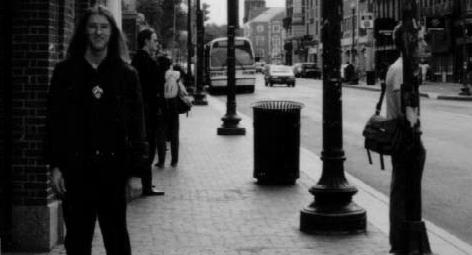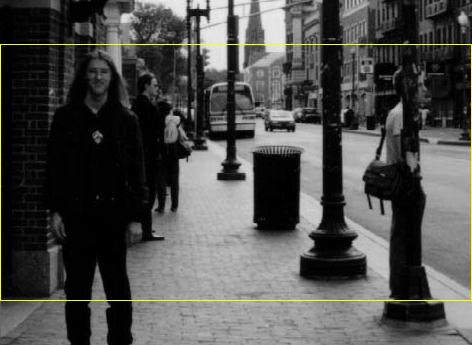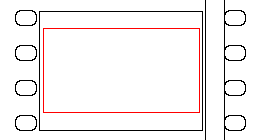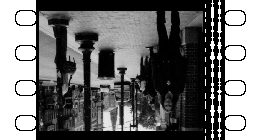
©1995-2001, Evans A Criswell
Flat Widescreen (1.85:1) Format
This format achieves a wider image than the academy format by wasting
part of the image area of the film by cropping the image during
projection, while increasing the magnification as necessary to fill a wider
screen. It was the format of choice to those who did not want to film
with anamorphic attachments. This technique is very
popular today and the aspect ratio of such films in the United States
is 1.85:1. Here is how the flat widescreen process works. Consider
the following scene to be filmed.
 |
| Intended theatrical image. |
 |
A 1.37:1 image is recorded on the film,
using academy camera aperture of 0.864" by 0.630",
with intention to crop to yellow rectangle area. |
 |
This shows the flat 1.85:1 film format.
Camera aperture (black): 0.864" by 0.630".
Projector aperture (red): 0.825" by 0.446".
Note the wasted image area. |
 |
| This shows the image on the film. |
 |
| The 0.825" by 0.446" 1.85:1 area is projected onto the theatre screen. |
Site created February 9, 1998
















